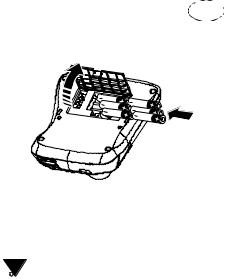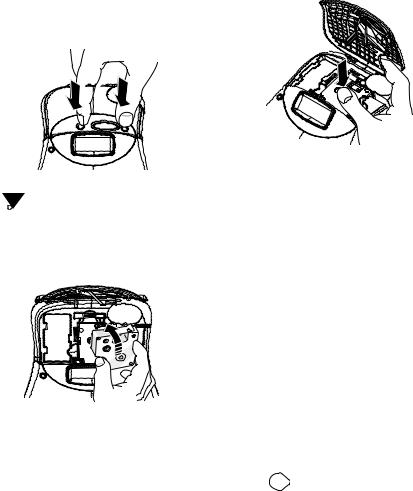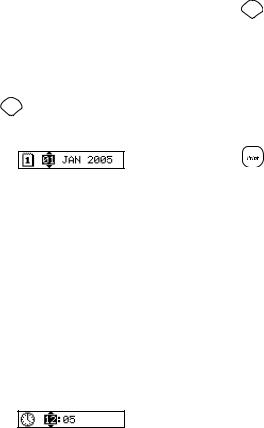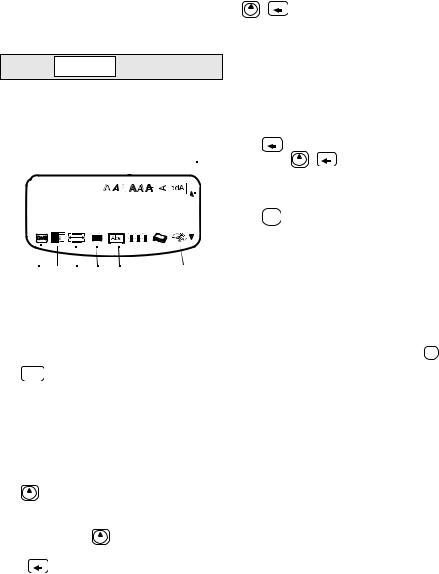Dymo LabelMANAGER 450 User Manual

USB Connector
AC Power Connector
|
|
|
|
|
|
|
w |
|
|
|
|
|
|
|
|
|
|
|
|
ww.d ym o.com |
|
|
|
Power |
|
|
|
|
|
|
|
|
|
|
|
Settings |
|
Settings |
|
|
|
|
|
|
|
|
|
Memory |
Language |
Memory |
|
|
|
|
|
|
|
|
|
Language |
|
Preview |
|
|
|
|
|
Symbols |
|
|
|
Preview/Insert |
|
Insert |
|
|
|
|
|
|
|
|
Cancel |
|
|
|
|
|
|
|
|
|
|
|
|
|
! 1 |
? 2 |
, 3 |
– 4 + 5 |
6 / |
7 = |
8 % |
9 & |
0 , |
Clear |
|
|
|
|
|
|
|
|
|
|
, |
. |
|
|
A |
Z |
E |
R |
T |
Y |
U |
I |
O |
P |
|
Tab |
|
Q |
S |
D |
F |
G |
H |
J |
K |
L |
M |
CAPS |
W |
X |
C |
V |
B |
N |
@ |
. |
|
* |
|
CAPS |
|
||||||||||
|
|
||||||||||
|
|
|
|
|
|
|
|
|
|
|
|
|
|
|
|
Shift |
|
SPACE |
|
|
Shift |
|
|
 LCD Display
LCD Display
|
|
Tape Exit |
|
|
Font Style/Size |
|
|
Font/Fixed Length |
|
|
Box/Align |
|
|
Symbols |
|
|
Cutter |
1,2...n |
|
|
|
|
Cancel |
|
|
Navigation |
|
|
Arrows & OK |
|
|
Backspace/ |
|
Enter |
Clear |
 Return/Enter
Return/Enter
 Currency
Currency
Space Bar
Shift
Figure 1 LabelMANAGER 450 Electronic Labelmaker

About Your New Labelmaker
With your new DYMO LabelMANAGER™ 450 labelmaker, you can create a wide variety of highquality, self-adhesive labels. You can choose to print your labels in many different sizes and styles. The labelmaker uses DYMO D1 tape cassettes in widths of 1/4” (6 mm), 3/8” (9 mm), 1/2” (12 mm), 3/4” (19 mm), or 1” (24 mm). Tape cassettes are also available in a wide range of materials.
Visit www.dymo.com for information on obtaining labels and accessories for your labelmaker.
Warranty Registration
Please complete the warranty registration card and return it to the appropriate customer service address within seven days of purchase. Visit www.dymo.com for details.
Getting Started
Follow the instructions in this section to print your first label.
Connecting the Power
The labelmaker can operate on AC or battery power. To save power, the labelmaker will automatically turn off after two minutes of inactivity.
Inserting the Batteries
The labelmaker uses six 1.5 volt high-capacity AA alkaline batteries.
To insert the batteries |
GB |
1.Remove the battery compartment cover. See Figure 2.
Figure 2
2.Insert the batteries following the polarity markings (+ and –).
3.Replace the battery compartment cover.
 Remove the batteries if the labelmaker will not be used for a long period of time.
Remove the batteries if the labelmaker will not be used for a long period of time.
Connecting the Power Adapter
Connecting the power adapter to the labelmaker disconnects the batteries as a power source.
To connect the power adapter
1.Plug the power adapter into the power connector on the top, left side of the labelmaker.
2.Plug the other end of the power adapter into a power outlet.
Inserting the Tape Cassette
Your labelmaker comes with one DYMO D1 tape cassette. Visit www.dymo.com for information about purchasing additional tape cassettes.
3

To insert the tape cassette
1.Press and release the tape cassette cover to open the tape compartment. See Figure 3.
Figure 3
 The first time you use the labelmaker, remove the protective cardboard insert from between the print head and pinch roller. See Figure 4.
The first time you use the labelmaker, remove the protective cardboard insert from between the print head and pinch roller. See Figure 4.
Remove cardboard insert
Figure 4
2.Make sure the tape and ribbon are taut across the mouth of the cassette and that the tape passes between the guideposts. If necessary, turn the spool clockwise to tighten the ribbon.
3.Insert the cassette with the tape and ribbon positioned between the print head and pinch roller. See Figure 5.
CLICK!
Figure 5
4.Press firmly until cassette clicks into place. Make sure the tape and ribbon are positioned correctly.
5.Close the tape cassette cover and press Ato turn on the power.
The Tape Settings menu automatically appears immediately after inserting a new tape cassette.
6.Use the arrow keys to select the tape width of the tape cassette currently in the labelmaker and press  .
.
Settings
You can set the language, current date and time, and the units of measure you want the labelmaker to use.
Selecting a Language
You can select from a number of different language options. By default, the language is set to English.
To select a language
1.Press Language .
2.Use the arrow keys to select the language you want and press  .
.
4

Setting the Current Date
The default date format depends upon the language selection for the labelmaker. You can change the default date format by following the instructions in Changing the Date Format on page 10.
To set the date
1. Press Settings .
2.Select Set Date, and press  . The default date is displayed.
. The default date is displayed.
3.Move the cursor over each setting (month, day, and year) and use the arrow keys to increase or decrease the value.
4.When finished, press  .
.
Setting the Current Time
The default time format depends upon the language selection for the labelmaker. You can change the default time format by following the instructions in Changing the Time Format on page 10.
To set the time
1.Press Settings.
2.Select Set Time, and press  . The default time is displayed.
. The default time is displayed.
3.Move the cursor over each setting (hours and minutes) and use the arrow keys to increase or decrease the value.
4.When finished, press  .
.
Selecting Units of Measure
You can choose to show measurements in inches or millimeters. The default units of measure depends upon the language chosen.
To set the units of measure
1. Press Settings .
2.Use the arrow keys to select Set Units and press  .
.
3.Select inches or millimeters and press  .
.
Printing Your First Label
You are now ready to print your first label.
To print a label
1. Enter text to create a simple label.
2. Press 1,2...n . The label is automatically cut.
The Auto Cut feature is turned on by default. To disable the Auto Cut feature, see Changing the Cutting Option on page 12.
3. Remove the label.
Congratulations! You have printed your first label. Continue reading to learn more about the options available for creating labels.
Getting to Know the Labelmaker
The following sections describe each feature in detail. Become familiar with the location of the feature and function keys on your labelmaker. See Figure 1 on the inside front cover..
Power
The Abutton turns the power on and off. After two minutes of no activity, the power is switched off automatically. The last label created is remembered and displayed when the power is turned back on. The previously selected style settings are also restored.
LCD Display
The labelmaker’s LCD display shows a row of up to sixteen characters. However, you can enter up to 99 characters and spaces.
5

The display is similar to a window that scrolls across the text. (See Figure 6.) The number of characters actually displayed can vary due to proportional spacing.
The quick brown fox jumps over the lazy dog.
Figure 6
In addition, feature indicators appear on the display to let you know when a feature is selected. See Figure 7.
|
Font and Size |
|
Style |
Scroll |
||||||
|
|
|
|
|
|
|
|
|
|
|



 BIG
BIG
CAPS mode |
Multiple Lines |
Fixed Length |
Align/Justify |
Underline/Box |
Mixed Formats |
# of Copies |
Auto Cut |
|
|
|
Figure 7 |
|
|
|
|
CAPS Mode
The CAPS key toggles capitalization on and off. When CAPS mode is turned on, the CAPS mode indicator is shown on the display and all letters that you enter will be capitalized. The default setting is CAPS mode on. When CAPS mode is off, all letters entered appear in lower case.
Shift Key
The Shift key, when used in combination with an alphabet key, changes the case of the selected letter. When used in combination with number keys or function keys, the Shift key selects the alternate function shown on the key. For example, when you press Clear , the character to the left of the cursor is
deleted; however, when you press
Shift + Clear together, the entire label text and formatting is deleted and the display is ready for you to type a new label.
Space Bar
The Vkey inserts one or more blank spaces in your text.
Backspace
The Clear key removes the character to the left of
the cursor. Shift + Clear clears all label text and formatting.
Cancel
The Cancel key allows you to exit from a menu without making a selection or to cancel an action.
Navigation Keys
With the Ckeys, you can review and edit your label, and navigate through the menus. Use the left and right arrow keys to move the cursor along the label text or to move through fields. Use the up and down arrow keys to increase or decrease settings and to select menu items, and then press  to accept the selection.
to accept the selection.
Connecting to Your Computer
Your labelmaker can be used as a standalone label printer or you can print labels from your computer using DYMO Label Software. Your labelmaker connects to your computer using the USB connection located on the top of the labelmaker. See Figure 8.
6
